Artificial track setup for ultimate racing experience
Artificial tracks are a key part of modern marble racing, providing a precise and customizable platform for all skill levels. Unlike natural tracks made of sand or gravel, these use materials like plastic, wood, or foam for smoother surfaces and consistent performance.
Their indoor-friendly design makes them ideal for year-round use, whether in professional competitions or casual setups. With enhanced control and creative flexibility, artificial tracks bring precision and excitement to marble sport.
What are artificial tracks?
Artificial tracks are custom-made or pre-designed racing courses built using man-made materials. Unlike natural tracks, which rely on sand, dirt, or gravel, artificial tracks are purposefully crafted to provide smooth, controlled surfaces on which marbles roll. They enhance precision, creativity, and consistency in marble racing.
Common materials used include:
- Plastic: Lightweight and durable, often found in modular sets for easy assembly.
- Wood: Offers a polished, high-quality look, often seen in handcrafted or professional setups.
- Foam: Affordable and easy to shape, great for experimenting with creative designs.
- PVC components: Used for ramps, loops, and curves to provide sturdy and seamless pathways.
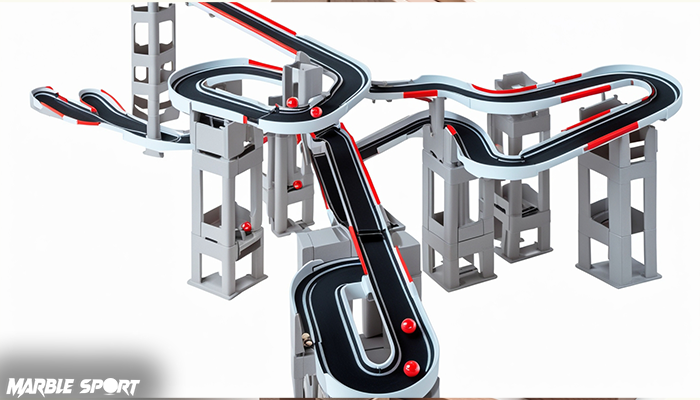
Artificial tracks are popular in a variety of settings:
- Professional Tournaments: Their precise design ensures fairness and reliability during competitive events. Many competitive tracks use artificial surfaces for consistent performance.
- Home Setups: Enthusiasts enjoy building custom tracks indoors, where artificial materials allow for long-lasting, reusable designs
Benefits of artificial tracks
Artificial tracks are a game-changer for marble racing, offering a host of advantages that elevate the racing experience. From precision engineering to long-lasting durability, here’s why they’ve become a favorite for enthusiasts and professionals alike:
Precision and consistency
One of the biggest benefits of artificial tracks is their ability to provide smooth and controlled rolling paths.
- The man-made materials used ensure predictable marble movement, minimizing disruptions caused by uneven surfaces
- This precision makes them ideal for competitive racing, where consistency is key for fair play.
With these surfaces, every race feels balanced and professional, ensuring the focus remains on skill and strategy.
Customizability
Artificial tracks allow for detailed and creative layouts that cater to various racing styles
- Modular design: Many come with interchangeable parts, making it easy to add loops, ramps, or obstacles.
- Builders can experiment with complex layouts, testing the limits of speed and control.
This flexibility makes artificial tracks perfect for both simple beginner setups and advanced designs.
Durability
Unlike natural tracks, artificial ones are built to last.
- They can withstand multiple races without wearing out or losing their shape.
- Materials like plastic, wood, and PVS are resistant to weathering, ensuring long-term use.
This durability makes them cost-effective options for frequent racers or those hosting events.
Indoor versatility
Artificial tracks are perfect for indoor setups, allowing for marble racing any time of the year.
- They are unaffected by rain, wind, or other outdoor conditions, making them reliable for consistent racing.
- Indoor use means less maintenance and a cleaner racing environment.
This versatility makes them ideal for everything from family fun nights to serious tournaments.
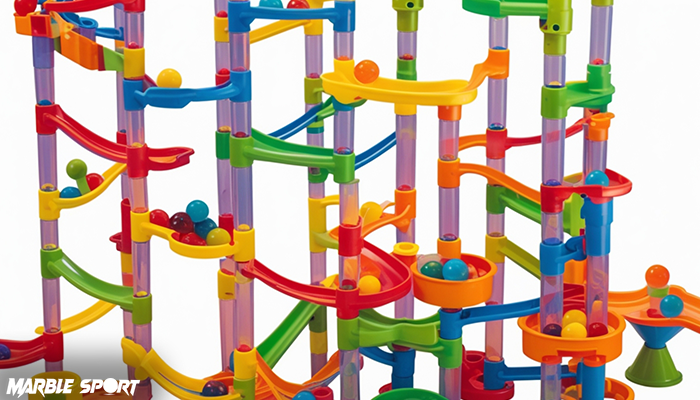
With precision, durability, and adaptability, artificial tracks have revolutionized marble racing, making it more accessible and enjoyable for racers of all ages and skill levels.
Challenges of artificial tracks
While artificial tracks offer precision and durability, they come with their own set of challenges. From cost considerations to environmental impact, here are some of the hurdles associated with artificial tracks:
Higher cost
Building or purchasing artificial tracks can be significantly more expensive than natural alternatives like sand or gravel.
- Materials: High-quality materials such as wood, PVS, or modular plastic parts often come with a premium price tag.
- Pre-made sets: Commercially available track sets are convenient but can be costly, especially for larger or more complex designs.
This makes artificial tracks a bigger investment, particularly for beginners or hobbyists on a tight budget.
Complex setup
Unlike natural tracks, artificial ones often require more effort and expertise to assemble.
- Tools and equipment: Setting up advanced artificial tracks may involve tools like drills, screws, or clamps, especially for custom builds.
- Precision requirements: Achieving the right angles, slopes, and connections can be time-consuming and may require trial and error.
For those new to marble racing, the learning curve for assembling these structures can be a bit daunting.
Environmental concerns
Artificial tracks are primarily made from synthetic materials, which raises concerns about their environmental impact.
- Non-biodegradable: Materials like plastic and PVC are durable but not eco-friendly, contributing to long-term waste if not recycled.
- Resource usage: The production and transportation of these materials often have a larger carbon footprint compared to natural alternatives.
For environmentally conscious builders, this can be a drawback when choosing artificial tracks.
Despite these challenges, artificial tracks remain a popular choice for their unmatched precision and customizability. With thoughtful planning and resource management, these hurdles can be minimized, making artificial tracks a worthwhile investment for marble racing enthusiasts.
Popular materials for artificial tracks
Artificial tracks rely on a variety of materials, each offering distinct advantages for building precise, durable, and customizable racing courses. Here are the most popular materials used for creating them.
Plastic
Plastic is one of the most commonly used materials for artificial tracks due to its versatility and durability.
- Lightweight and portable: Easy to assemble and move, making it perfect for modular designs.
- Smooth surface: Provides consistent rolling paths for marbles, ensuring precision and speed.
- Colorful options: Available in a wide range of colors and styles to add visual appeal to your track.
Plastic is widely used in pre-made track sets, making it a go-to option for beginners and casual racers.
Wood
For a more polished and high-quality feel, wooden tracks are an excellent choice.
- Classic aesthetic: Offers a timeless, professional look for custom-built tracks.
- Durability: Strong and long-lasting, capable of withstanding frequent use.
- Customizable: Easy to cut, shape, and paint, allowing for intricate and unique designs.
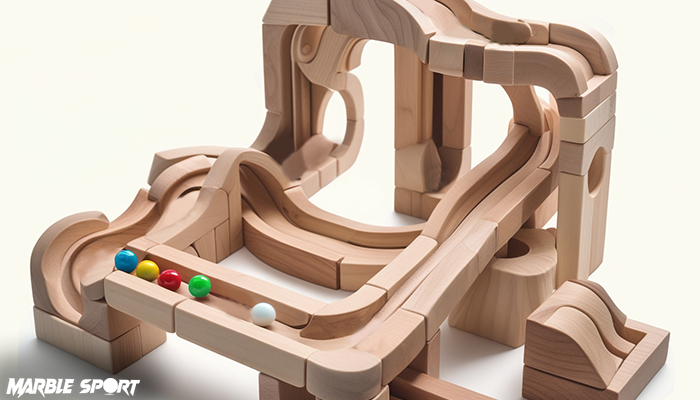
Wood is often favored by enthusiasts who want to create premium, handcrafted tracks for their setups.
Foam
Foam is an affordable and flexible material that’s great for experimenting with creative designs.
- Lightweight: Easy to handle, making it ideal for quick setups or DIY projects.
- Shapable: Can be easily carved or bent into curves, loops, and other features.
- Safe for kids: Soft texture reduces the risk of damage or injury, making it a popular choice for family setups.
Foam is perfect for hobbyists looking for low-cost and beginner-friendly material.
PVC components
PVC is often used for more robust and structured track designs.
- Sturdy framework: Ideal for creating stable ramps, curves, and long straight paths.
- Weather-resistant: Suitable for indoor and outdoor use, offering flexibility in setup locations.
- Smooth finish: Ensures marbles roll seamlessly through the track.
PVC components are popular in professional setups and among enthusiasts aiming for durability and precision.
Choosing the right marbles
The choice of material depends on your budget, skill level, and track purpose. Whether it’s the affordability of foam, the elegance of wood, or the versatility of plastic, each material brings something unique to the table. I enjoy combining materials – using foam for creative sections and PVC for sturdy foundations – to create tracks that are both fun and functional.
By understanding the strengths of each material, you can select the one that best suits your vision for an exciting and high-performing track.
Real-world applications of artificial tracks
Artificial tracks have revolutionized marble racing, making it more versatile and accessible. From professional events to educational settings, here’s how artificial tracks are being used in real-world scenarios:
Professional competitions
In marble racing tournaments, artificial tracks are the go-to choice for their precision and reliability
- Consistent performance: Artificial tracks ensure smooth rolling and predictable outcomes, making them ideal for high-stakes competitions.
- Ease of customization: Modular designs and pre-made components allow organizers to create complex layouts tailored to specific events.
- Spectator appeal: Brightly colored tracks with unique features enhance the visual excitement of live and streamed races
Many popular marble racing leagues, like Marbula One, rely on artificial tracks to deliver exciting and flair competition.
Home racing enthusiasts
Artificial tracks are a favorite among hobbyists and families looking to bring marble racing indoors.
- DIY setups: With materials like plastics, foam, or wood, enthusiasts can build custom tracks that suit their space and creativity
- Reusable designs: Artificial tracks are durable and can be taken apart and rebuilt, making them perfect for experimenting with different layouts.
- Year-round fun: Unlike natural tracks, artificial setups can be used indoors, ensuring uninterrupted racing regardless of the weather.
Whether it’s a casual weekend activity or a creative challenge, artificial tracks provide endless opportunities for fun and engagement.
Educational uses
Artificial tracks are increasingly being used as educational tools, combining play with learning.
- Physics and engineering: Students can explore concepts like gravity, momentum, and friction through hands-on experiments.
- Problem-solving skills: Designing and troubleshooting tracks teach logical thinking and creativity.
- Collaborative learning: Building tracks in groups encourages teamwork and communication, essential skills for any classroom.
Teachers and parents alike appreciate artificial tracks as a way to make STEM education interactive and exciting.
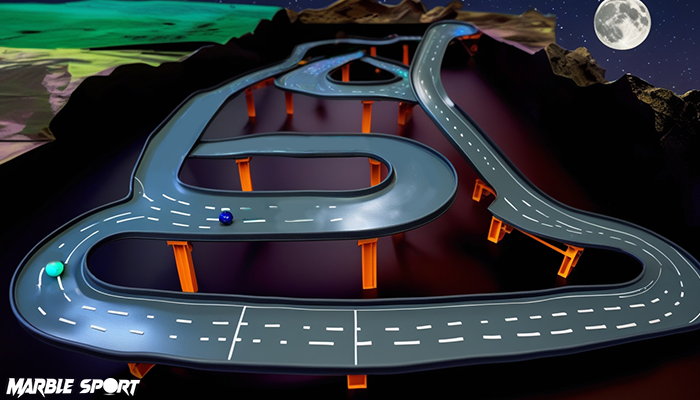
From professional competitions to educational projects, artificial tracks have proven their value across a variety of settings. Their precision, durability, and versatility make them an essential part of the growing world of marble racing.
Comparison: Artificial vs Natural tracks
Artificial and natural tracks offer distinct experiences for marble racing, each catering to different preferences and styles. Let’s break down the key differences between these two types of tracks:
Performance
The first thing we will take a look at is the performance of artificial and natural tracks
Artificial track
Provide precision and consistency, ensuring marbles roll smoothly without interruptions
Ideal for competitive racing, where fairness and predictability are essential
Natural tracks
It offers unpredictability, as the terrain can shift or change during races.
Add an element of challenge and excitement, requiring racers to adapt to the conditions.
If you value control, artificial tracks are the better choice. For a more dynamic and unpredictable race, natural tracks bring an adventurous twist.
Durability
Artificial tracks
Built with long-lasting materials like plastic, wood, or PVS, they can withstand multiple uses.
Resistant to weather, making them suitable for indoors and repeated setups.
Natural tracks
Typically made from sand, gravel, or dirt, which can erode or lose shape over time.
Eco-friendly but less durable, requiring frequent rebuilding for each race.
For longevity and reliability, artificial options win. However, natural tracks offer a more sustainable option for eco-conscious builders.
Setup
Artificial tracks
Require tools, materials, and planning, especially for complex designs.
Modular parts make them easier to assemble and modify, but the initial effort can be time-intensive.
Natural tracks
Can be built on the spot with minimal materials or tools. Offer flexibility to quickly reshape or adjust the design as needed.
Artificial tracks are better for those who enjoy detailed planning and consistent results. Natural tracks are perfect for quick, creative setups.
To conclude
Choosing between artificial and natural tracks depends on your priorities:
- For precision, durability, and competitive play, artificial tracks are the way to go.
- For eco-friendliness, creativity, and spontaneity, natural tracks provide a unique and exciting alternative.
Both have their strengths and experimenting with booths can offer the best of both worlds in the diverse world of marble racing.
FAQ about Artificial track
What materials are used in artificial marble tracks?
Common materials include plastic, wood, foam, and PVC—each suited for different racing needs and styles.
How do artificial tracks compare to sand tracks?
They offer better control, consistency, and longevity but less unpredictability.
Where can I buy artificial tracks for marble racing?
Online stores like Amazon, eBay, or marble sport specialty shops offer modular sets and kits.
What is the best artificial track for sale for beginners?
Starter modular sets made from plastic are budget-friendly and easy to assemble.
Are there artificial tracks used in marble racing Olympics or leagues?
Yes. Events like Marble League and Marbula One use custom artificial tracks designed for high precision.
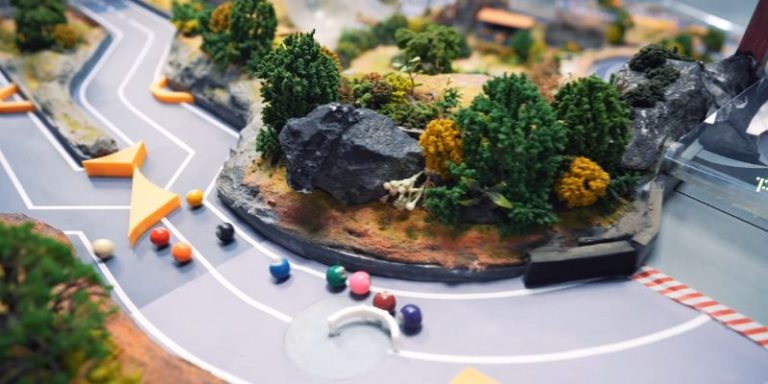
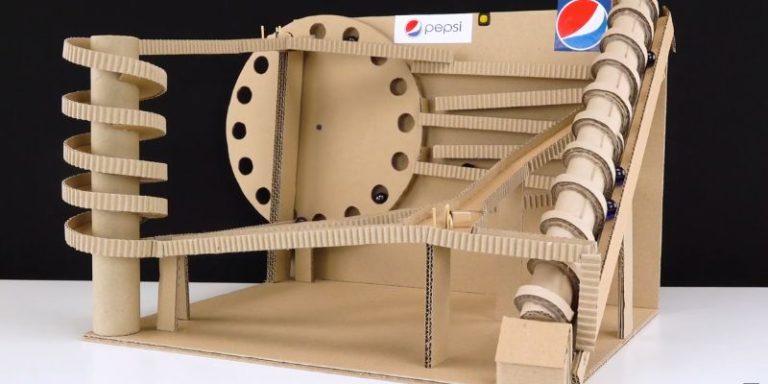

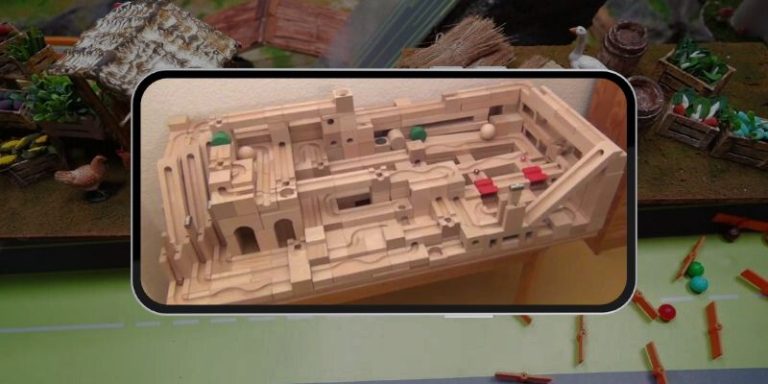
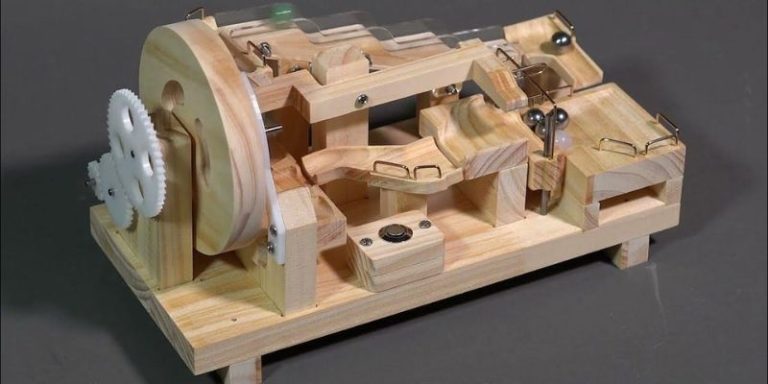

2 Comments